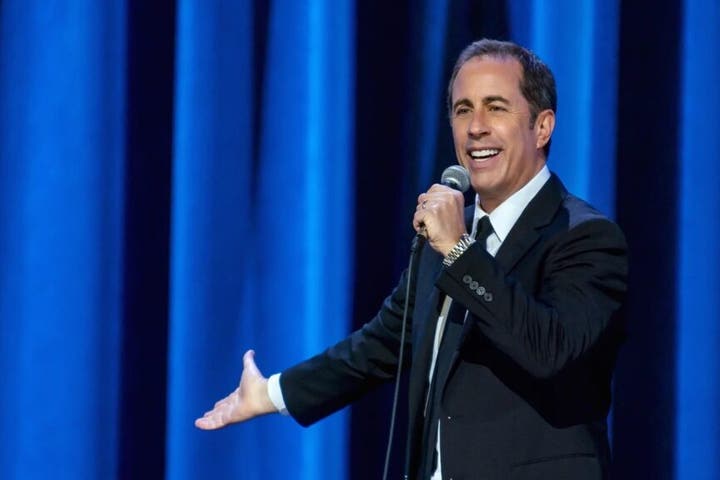Benzinga and Yahoo Finance LLC may earn commission or revenue on some items through the links below.
Anyone who ever joked that “Seinfeld” was “a show about nothing” might want to retire the punchline. For Jerry Seinfeld, the sitcom turned into one of the most profitable engines in entertainment history, and it has kept generating money long after the final episode aired in 1998.
That scale came into full view last year, when Bloomberg published its March 2024 feature “Get Out! Jerry Seinfeld Is a Billionaire,” placing him on the Bloomberg Billionaires Index for the first time.
The Bloomberg analysis estimated that syndication and licensing deals alone have earned him about $465 million, with another $94 million coming from the Netflix streaming rights sale. Forbes currently values his net worth at $1.1 billion, cementing a fortune powered heavily by reruns, residuals and the staying power of a sitcom built on everyday absurdities.
“I like money,” Seinfeld told the New York Times in 2012. “But it’s never been about the money.” Delivered as a dry, self-aware joke at the time, the line lands differently when the show that built his career has generated billions in revenue since it left NBC’s primetime schedule.
Don’t Miss:
Bloomberg’s breakdown shows why. Analysts estimate Seinfeld held a 15% stake in the show’s syndication deals. The series earned $3.1 billion between 1998 and its fifth syndication cycle in 2013. The Los Angeles Times later reported that Netflix paid far more than $500 million for global streaming rights. Add the touring revenue that has topped $100 million since the 1980s, and the math behind Seinfeld’s billionaire status becomes straightforward.
And that’s before accounting for the assets Bloomberg left out. Seinfeld’s car collection has become a legend of its own. Multiple outlets have valued it at roughly $100 million, a mix of rare Porsches, historic builds and specialty models that often appreciate faster than traditional investments. The cars became almost co-stars in “Comedians in Cars Getting Coffee,” where each episode doubled as a tour through automotive history. Some collectors have suggested that Seinfeld’s Porsche portfolio alone rivals museum-quality collections.
His real estate adds another layer. Bloomberg identifies about $40 million in property, including his Upper West Side apartment overlooking Central Park, a Hamptons estate known for its privacy and a California warehouse built to house part of his car collection. Even without the vehicles or the entertainment income, the real estate alone qualifies as a heavyweight portfolio.
Seinfeld’s fortune is still shaped by the broader arc of his career, from Netflix specials to film projects to consistent touring. But the foundation remains the sitcom that ended more than two decades ago. A show built around everyday grievances and tiny social frustrations quietly turned into a global business model, proving that observational humor can become generational wealth when it syndicates well.
A comedian who once joked about the absurdity of everyday life now watches those same moments turn into a fortune that grows every year. Viewers still shout “No soup for you” at their screens, drop a casual “yada yada,” and call out a “low talker” without missing a beat, proving “Seinfeld’s” world never really ended. The reruns keep looping, the checks keep clearing, and the cultural shorthand he helped invent refuses to fade.
For everyone outside the billionaire bubble, the idea behind Seinfeld’s fortune — money that keeps working long after the punchline — is still within reach on a smaller scale. Arrived lets everyday investors buy fractional shares of rental properties for as little as $100 to earn passive income. It is not syndication-level wealth, but like the puffy shirt episode, the payoff comes from what you agree to own.
See Next:
This article Jerry Seinfeld Says, ‘I Like Money, But It’s Never Been About the Money’ — Since ‘Seinfeld’ Went Off The Air In 1998, It’s Made Him Over $500 Million originally appeared on Benzinga.com

